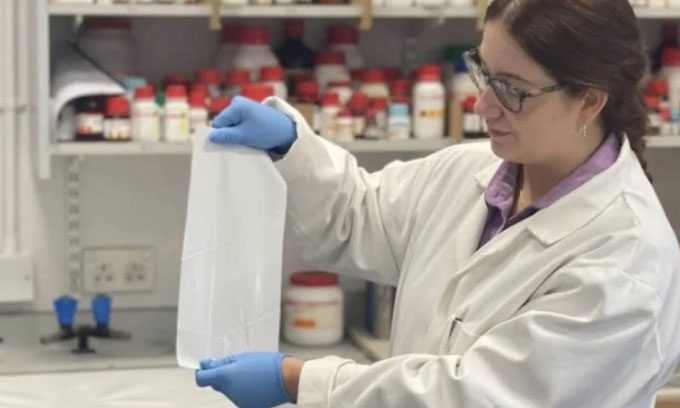Scientists Develop Plastic That Destroys Long-Lasting Viruses on Surfaces, Including nCoV.
A research team at Queen’s University in Belfast has announced the development of an affordable plastic film that can be applied in personal protective equipment. This type of plastic works by reacting to light to release chemicals that kill viruses. The study indicates that the material can eliminate millions of viruses, even those that persist on clothing and surfaces for extended periods. The findings were published in the October issue of the journal Photochemistry and Photobiology B: Biology.

Self-sterilizing plastic film effectively kills viruses in tests. (Photo: Queen’s University)
According to various studies, nCoV can survive for up to 72 hours on certain surfaces. The norovirus, which causes vomiting, can remain outside the body for two weeks, waiting for a new host to infect. The team of chemists and virologists is researching self-sterilizing materials to reduce the risk of infection from contaminated surfaces. Their goal is to create a material where viruses cannot survive. While copper can kill germs upon contact, it is less flexible.
Therefore, the research team utilized thin plastic sheets embedded with titanium dioxide nanoparticles. These particles react to ultraviolet light, even from small amounts emitted by fluorescent bulbs, to release molecules known as reactive oxygen species. These species interact with the genetic material of the virus, resulting in the virus’s death and rendering it ineffective.
According to Professor Andrew Mills from the chemistry department at Queen’s University, the new plastic film could replace many single-use plastics in the healthcare industry and help reduce sterilization costs. The material has been tested in the laboratory against four types of viruses, including two strains of influenza, nCoV, and picornavirus, a species known for its high stability outside the body. Under laboratory conditions, approximately one million viral particles were placed on the self-sterilizing plastic, far exceeding the amount needed to initiate an infection.
All viruses were completely eliminated within two hours, as reported by Dr. Connor Bamford from the School of Medicine at Queen’s University. The research team is considering additional surfaces such as tablecloths and hospital curtains, as well as applications in the food processing industry. They will need to conduct real-world testing to determine how significant a difference the self-sterilizing plastic can make.



















































